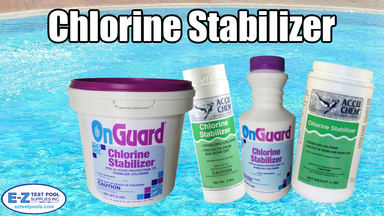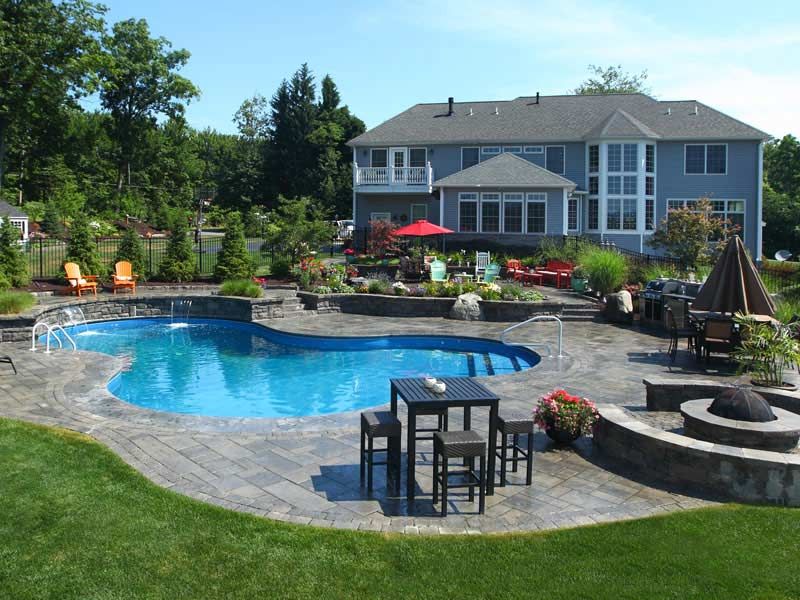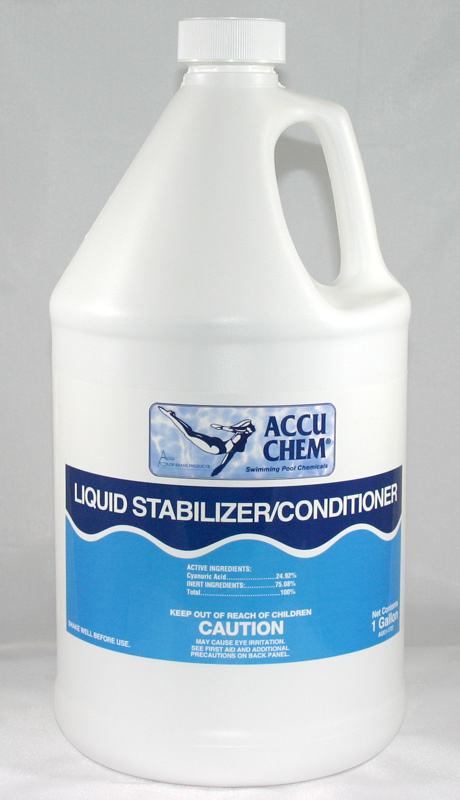Published by EZ Pool & Spa Supply on 06/28/2019
What is Chlorine Pool Stabilizer?
During the summer months when the sun is out and the temperatures really start to heat up is when your pool gets the most use and you are happily reminded why you made the decision to install one in the first place.
Maintaining a pool involves keeping many different things in balance and when you add that bright summer sunlight into the mix, it actually throws another item into pool care. Your pool’s chlorine levels that you work so hard to monitor actually get attacked by that precious summer sunlight that everyone has waited so long for. The pool water’s exposure to the sun causes the chlorine to actually start evaporating, which in turn, lowers the chlorine levels overall making the water more susceptible to all of the things that the chlorine was put there to combat in the first place.
Chlorine is a very important part of disinfecting the water in your pool. Many people spend good money on chemicals to make the pool water as clean and safe as possible. The last thing that you want to do is leave your investment susceptible to the elements for evaporation. Thankfully, there is something called stabilizer that prevents this from happening. Sometimes referred to as cyanuric acid, you can think of this chemical as sunblock for your pool as well as protection for your investment. This acid may also be a featured component in chlorine tablets, chlorine sticks, or in certain types of shock called stabilized chlorine.
Pool stabilizer comes in two forms, a powdered granule as well as a liquid. The former is what most people have grown accustomed to using, while the latter may be more foreign, however its ease in use, and the immediate benefits it brings, certainly place the stabilizer which comes in liquid form as the more ideal for optimal results. Let’s get a bit more in depth on this while we are on the subject. Why is liquid stabilizer the more ideal you may ask? Well, for us, there are several factors to consider. The powder takes a very long time to dissolve while liquid stabilizer is more soluble and your pool can receive the benefits immediately. Liquid stabilizer also has a pH level of around 8.0 which is super-friendly for a pool and is not typically problematic while interacting with other chemicals. Another rule of thumb, is that you would require 1 gallon of liquid pool stabilizer for every 10,000 gallons of water in your pool. That same 1 gallon will increase your cyanuric acid reading 35ppm in the same 10,000 gallons of water.
Adding stabilizer to your pool is usually a very simple process. You'll want to shake the container a bit to make that the chemical is in a good solution. Ensure that your pump is running and pour the product into your skimmer or you can even pour it directly into the pool along the perimeter. Stabilizer does its work by attaching to ions of chlorite (this is your free chlorine) and this makes the ions be able to stand up against the sun and its rays while not evaporating. Without the stabilizer, the sunlight would attack and break apart the chlorite ions and allow them to disappear by evaporation. Many products advertise that by using their liquid stabilizer, that chlorine will last 6 to 10 times longer than without using anything at all.
This all sounds really great in theory but there is somewhat of a catch. When the stabilizer does its job and bonds to the chlorine it actually reduces the chlorines ability to sanitize. This actually has a name; it’s called the “Oxidation Reduction Potential” and the stabilized chlorine lowers it. In other words, the chlorine that is stabilized takes longer to kill bacteria than chlorine that is not stabilized.
As you do your research and read about stabilizer, you will certainly find that there is not an exact agreed upon amount to use. We recommend to not go any higher than 50 ppm because as the levels increase you start to see the effects of the stabilized chlorine. Algae may start to grow at levels above this number as your chlorine’s abilities weaken and you don’t get any additional sunlight protection added anyways.
Adding chemicals to your pool water and keeping it in balance is usually something that is non-stop. With stabilizer the opposite is true. It never gets used up, it never evaporates, it just sits in your water unless there is a very significant splash out or a large evaporation. Rain water or water from other sources that are added to your pool will also cause your stabilizer levels to become diluted. If you use stabilized chlorine in your pool every week you are already adding a touch of stabilizer anyways which can usually work well to counteract the forces just mentioned. Of course, even when your stabilizer level is below 50 ppm you will still want to make sure that you closely monitor everything through your normal and frequent water testing routine.
What is an ideal balance of stabilizer and free chlorine you may ask? Aim to keep the chlorine level at 7.5% of what your stabilizer level is. So, if your stabilizer is at the ideal 50ppm then you would want to shoot for the free chlorine to measure in between 3-4ppm. A best practice would be to routinely have your water tested professionally as most home kits don’t test for cyanuric acid / stabilizer levels.
When it comes to utilizing the liquid stabilizer, we couldn’t be more in support of this versus the granules. Let’s not forget that another word for stabilizer is in fact, “cyanuric acid” so it would be best to not handle it or mix it with your hands, especially in granular form as it can most certainly burn you. The acid also has the potential to damage your skimmer or surface of your pool if placed directly in the pool and left to dissolve on its own. This granular form dissolves very slowly, so slowly in fact, that you may have to pre-mix it in something like a 5-gallon bucket. Then at the end you basically have liquid stabilizer in a bucket anyways.
Another really good point is that your stabilizer from last year didn’t go anywhere during the cold winter months. Really, the acid may fall out of solution as it is denser than the water itself, so after the pool has been open and operating for 3 to 5 days is when you will want to take a deeper “dive” into your pool’s water chemistry. This is done this way to give everything in your water a chance to move around and evenly distribute. At this point, you’ll be able to get the most accurate readings and formulate an action plan.
Our Water Lab is ready to get to the bottom (and in this case, the surface) of what is going on with your pool water. Visit one of our three retail locations to have your pool water professionally tested and one of our team members can advise on what would be needed to optimize.
We have several liquid stabilizers available at our retail locations and for purchase online.









